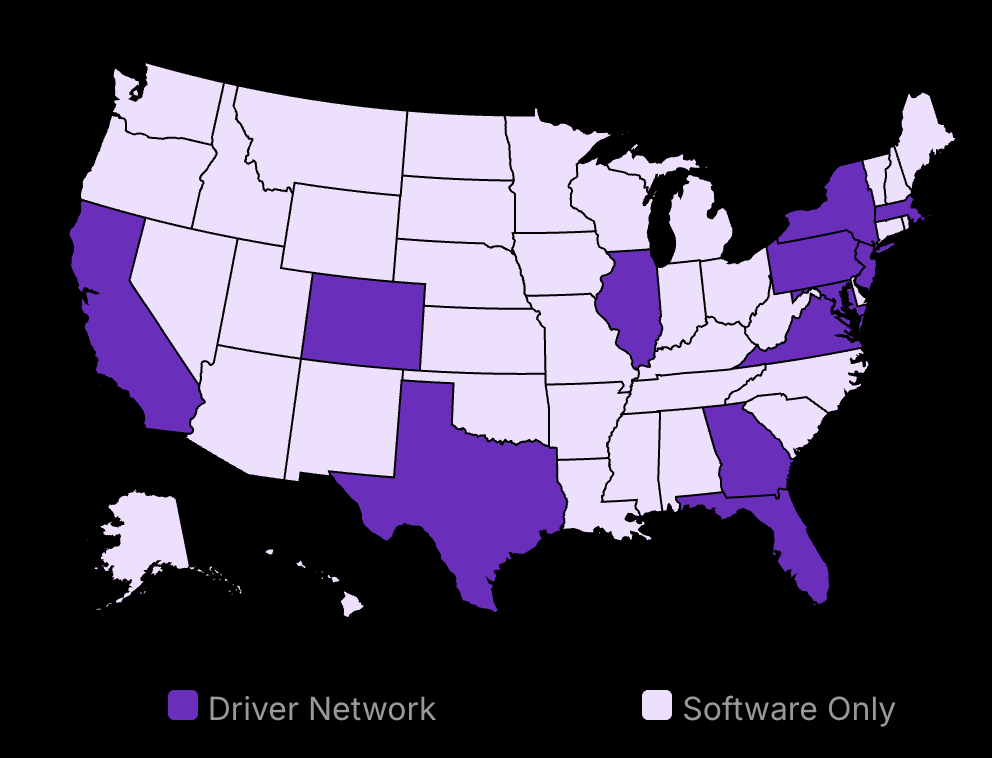
Growing a business isn’t what it used to be. While you’re reading this, thousands of potential customers are making decisions online, influenced by search engines and social media platforms, about where to spend their money. The question is: will they choose you?
The small businesses that thrived weren’t always using fancy technology or had the biggest marketing campaigns
Their secret? They understood that to get more customers in 2025, you need both timeless principles, like outstanding customer service, and fresh approaches, often focusing on a strong online presence and smart digital marketing.
The truth is harsh but simple: most businesses, particularly local businesses, will struggle to get more customers this year. Not because they don’t work hard, but because they’re following outdated playbooks in a rapidly changing market where understanding your target market through diligent market research is paramount. Simply hoping for free advertising isn’t enough.
What’s working now is quite different from what worked even 12 months ago. Algorithms on social media channels and search engines have shifted. Customer expectations for excellent customer service have evolved. Economic pressures have transformed buying behaviors, making it crucial to know how to get more customers effectively.
Are you still using 2023 strategies for your marketing efforts in 2025’s marketplace? Maybe your website SEO needs an update, or your approach to social media needs refreshing?
The good news: Small shifts in your marketing strategy can lead to dramatic results. The seven strategies we’re about to share in this blog post have been tested and refined by real businesses, helping them get more customers and achieve growth.
These aren’t theoretical concepts found only in industry news. They’re practical, actionable methods—like optimizing for local SEO, leveraging email marketing, or learning how to run effective targeted ads—that can transform your customer acquisition efforts starting today.
By the time you finish reading, you’ll have a clear roadmap to get more customers and not just survive, but thrive in today’s competitive landscape, potentially using insights from customer feedback to refine your value proposition.
Ready to stop guessing and start growing your customer base with confidence?
Optimize with Data-Driven Sales Strategies for Local Businesses
Analyze customer data to refine tactics.
Boost lead conversion with targeted changes.
Stay ahead by adapting based on insights.
Harnessing data to craft effective sales strategies can fundamentally change the way businesses attract customers. Many are asking, “How can you attract more customers?” A simple answer lies in data. Using data effectively can provide a roadmap to understand customer needs and refine sales strategies.
1. Understand Your Audience Using Free Tools
Data offers a unique window into customer behavior. It’s more than just numbers; it paints a picture of who your customers are.
Use Analytics to Learn Customer Preferences and Get More Customers
Analytics tools help identify what your customers value most. For instance, demographic data can uncover if a product appeals more to a younger audience or if regional preferences affect purchasing. Analyzing these aspects can guide product development and marketing strategies.
Companies that segment their audience by behavior can craft messages that resonate, resulting in more effective campaigns.
Segment Customers for Targeted Efforts
Segmentation is about directing the right message to the right audience. By understanding distinct groups within your market, you tailor approaches to meet their specific needs.
Methods include grouping by geography, age, or purchasing behavior. This tailored communication increases engagement by making customers feel understood.
For instance, businesses report that dividing their customer base by purchasing patterns leads to higher-performing campaigns.
Adjust Actions Based on Data Insights
Businesses that swiftly pivot based on data stand to gain. After identifying preferences and segments, the next step involves refining tactics to improve performance.
Adjusting sales pitches, product presentations, and promotional campaigns based on consumer data often result in boosted sales.
2. Improve Lead Conversion with Flash Sales
Improving lead conversion hinges on adapting strategies for each touchpoint, playing a crucial role in customer acquisition.
Track Conversion Metrics Closely
Monitoring metrics like conversion rates and bounce rates can highlight the strengths and weaknesses of your current approach.
Identify Points Where Leads Drop Off
Analyzing data to pinpoint transition points where leads abandon their journey can inform efforts to improve retention.
Implementing A/B testing helps identify what works best.
For example, some businesses discovered that complex checkout processes deterred purchases and streamlined these for better results.
Use AB Testing for Better Results
Experimentation through A/B testing should be an ongoing process, adjusting everything from email subject lines to web page layouts.
A B Testing Ease: Only 7% of companies believe it’s difficult to perform A/B tests.
By constantly testing different elements, businesses can optimize connections with potential customers, resulting in improved engagement.
Businesses that perform A/B testing often find what captures customer interest and what causes disengagement.
Website Testing Adoption: 77% of companies are running A/B testing on their websites.
Shaping data into a strategic advantage requires careful analysis and action. By optimizing sales strategies with a data-driven focus, businesses are on a strong path toward attracting more customers.

Save 80% of delivery management time
We handle everything:
- Dedicated operations manager
- Real-time tracking dashboard
- Automated customer notifications
- Urgent issue resolution
Leverage Innovative Digital Marketing Tactics
Get ahead by tapping into untapped social media platforms.
Boost sales with customized marketing efforts.
3. Explore Emerging Social Media Platforms for Free Advertising
New social media platforms can be a goldmine. Not every platform is Instagram or Facebook, but that’s where the potential lies. Find out where your target demographic hangs out online. Platforms like TikTok, Twitch, and even niche forums could hold your next big opportunity. Each platform attracts different audiences, so research is key.
Content should fit the platform. TikTok users love short, catchy videos but on Reddit, engaging discussions are more effective. Jay Baer says, “Content is fire; social media is gasoline.” Your content can spark a reaction, while the platform spreads it like wildfire.
Measure engagement regularly. Likes, shares, and comments aren’t just vanity metrics—they’re insights. Analyze what works, then refine your strategy based on these learnings. Experiment with formats like stories, reels, and live streams to see what resonates best.
Social Media Marketing Impact: 93% of all marketers cite more exposure for their business as the number one benefit of social media marketing.
4. Implement Personalized Email Marketing
Personalized marketing is the next frontier. Use customer data to craft messages that fit like a glove. Peter Drucker said, “The aim of marketing is to know and understand the customer so well that the product sells itself.” Start by analyzing purchase histories, browsing patterns, and even social media interactions.
Personalization Purchase Influence: 80% of consumers are more likely to make a purchase when brands offer personalized experiences.
Automate your campaigns. With tools like Mailchimp and HubSpot, you can automate messages that cater to individual preferences. These aren’t just about names in an email—it’s about delivering relevant content that meets their interests or needs.
Consumer Personalization Expectation: 71% of consumers expect companies to deliver personalized interactions.
Track personalization effectiveness. Use analytics tools to see which personalized strategies perform best. Every data point is a clue that can help tailor future messages for greater impact.
Boost Retention with Strong Customer Relationships and Community Events
Strong relationships keep customers coming back.
Well-trained support teams improve these ties.
Loyalty programs solidify regular patronage.
5. Enhance Customer Support Using Customer Feedback
Customer support is the heart of a brand’s image. It’s not just about resolving problems; it’s about fostering connections. Companies offering comprehensive customer support across multiple channels experience heightened customer satisfaction. Fast response times and helpful resolutions result in more loyal customers. Training staff is key. They should be adept at tackling issues swiftly and empathetically. Providing consistent quality can prevent customers from seeking alternatives.
Happy customers tend to stick around longer. This aligns with the idea that keeping existing customers can be cheaper than acquiring new ones. Additionally, gathering feedback ensures the continuous enhancement of services. For instance, Bill Gates once said that your most unhappy customers are your greatest learning source. Grasping these insights can transform weaknesses into strengths, further boosting retention.
Retention Profit Impact: Increasing customer retention rates by 5% can increase profits by 25% to 95%.
6. Create Loyalty Programs with Customer Discounts
Designing effective loyalty programs can fortify strong customer relationships. These programs go beyond offering just rewards. They focus on forming bonds grounded in appreciation and personalization. Offering rewards on repeat purchases encourages frequent engagement and secures long-term commitment. Customizing these rewards requires understanding individual preferences through data analysis.
Loyalty Program Retention Power: 77% of consumers say they are likely to stay with a brand that has a loyalty program.
Programs need constant evaluation. By monitoring their impact on retention rates, companies can tweak their offerings to remain relevant and effective. An example is Starbucks, which continuously assesses its loyalty program to maintain customer interest. In light of Richard Branson’s insight, exceeding expectations in unexpected ways can elevate retention rates.
Giving perks without a personal touch might not boost loyalty. The aim should be to create authentic connections. Loyalty should result in advocacy, encouraging customers to recommend your service.
7. Addressing Repeat Concerns with Current Customers
One good way to ensure customers return sooner is to establish meaningful connections. Personalization is crucial. Understanding a customer’s past interactions and preferences can tailor their future experiences. Feedback is invaluable. It can highlight areas needing intervention and guide further improvements.
Loyal Customer Behavior: Loyal customers are 70% more likely to make repeat purchases.
The three R’s of customer retention — Respect, Reliability, and Relationship — play an integral role here. Respect their needs, be reliable in service delivery, and foster a continual relationship through personalized interactions. It’s not just about financial transactions but valuable interactions.
Repeat Customer Value: Repeat customers spend 67% more than new customers.
Misconceptions often arise. In truth, through strong relationships, businesses can reduce this cycle. Implementing structured follow-ups and personalized offers can ensure customers revisit sooner.
Adapt to Customer Acquisition Trends to Attract Customers in 2025
Sustainable practices attract eco-conscious buyers.
AI handles many customer interactions.
Personalization boosts conversion rates.
Focus on Sustainable Practices
In 2025, sustainable practices will not justbe a trend. They’re becoming a significant part of customer acquisition strategies. Companies that focus on eco-friendly initiatives find it appealing to the growing segment of environmentally conscious consumers. This is not just about following a trend but recognizing a shift in consumer demand. Books like “The Responsible Company” by Yvon Chouinard and Vincent Stanley provide insights into incorporating sustainable practices into business models. Read it to understand how Patagonia built its reputation on these principles.
Eco-friendly marketing is a key strategy. Highlighting green practices resonates with customers, especially when they feel aligned with their values. It’s no longer enough to claim sustainability as a badge. Brands need to prove their commitment. Holistique Training notes the impact of showcasing sustainable sourcing, recyclable materials, and energy efficiency on consumer choices. Consider exploring the works of Lester R. Brown, whose writings on sustainability provide deeper context and actionable insights for businesses aiming to improve their green strategies.
Amid this push for sustainability, there’s a counterargument. Some question the genuine efficacy of sustainability-focused marketing. Critics argue that customers may experience overload from exposure to greenwashing, where companies claim to be eco-friendly but fall short. This highlights the importance of transparency. Delve deeper into this with John Elkington’s book “The Breakthrough Challenge”, which discusses authentic corporate responsibility and its impact.
Incorporate AI in Customer Interaction
The integration of AI into customer interactions is transforming how businesses engage with their customers. This allows for efficiency and personalization at a scale that human agents can’t match. The role of AI in handling routine queries through chatbots frees up human agents for more complex tasks. For a deeper professional understanding, consider reading “Artificial Intelligence: A Guide to Intelligent Systems” by Michael Negnevitsky. It’s a comprehensive text that explains how AI revolutionizes customer service.
AI Service Improvement View: 79% of marketers feel that Generative AI will help businesses serve customers better.
Personalization is crucial. Using AI for predictive analytics can give businesses an edge. AI can identify customer preferences, behaviors, and needs with high accuracy. This, in turn, leads to a more personalized experience and increased conversion rates. But there’s a debate. While AI improves efficiency, some worry about the loss of the personal touch in customer service. For those interested in contrasting views, explore “The Singularity is Near” by Ray Kurzweil, which touches on the broader impact of AI on personalization.
AI Decision Making Benefit: 83% of employees say AI’s capacity for decision-making is a major highlight of adoption.
Efficiency gains from AI are hard to ignore. AI automates mundane tasks, reducing response times and operational costs. Mike Bowman from ECSI highlighted how AI removes limits imposed by call volume. Whether dealing with one or thousands of calls, AI manages them simultaneously. This demonstrates how AI can be a game-changer in customer service. Nevertheless, it’s essential to balance automation with human interaction consciously. For businesses looking to maximize AI’s potential, Timothy Mitchell’s work on machine learning offers further reading.
Generative AI Interaction Efficiency: 70% of CX leaders think generative AI makes every digital customer interaction more efficient.
Predict Future Changes with Complementary Businesses: Stay Ahead in 2025
Use insights to plan for the future.
Embrace digital advances to stay competitive.
Prioritize customer experiences for growth.
Predictive Analytics for Future Trends
Predictive analytics uses data to foresee future events. Eric Siegel describes it as a tech that learns from past actions to predict consumer behavior and make better decisions. It helps businesses stay competitive. By analyzing previous data, companies can set flexible strategies, moving resources efficiently.
For instance, consider the success of a retail company that employed predictive analytics to anticipate seasonal demand spikes. The analysis allowed them to increase stock levels ahead of time, boosting sales and avoiding out-of-stock situations. However, there are challenges. Predictions can be inaccurate. Overreliance on past data might fail to account for novel external factors.
Critics point out the risks of trusting predictions without human oversight. Others worry about privacy concerns, as predictive analytics often requires vast amounts of data.
Evolving Digital Transformation
Digital transformation is not just about IT upgrades. It integrates new tech into every part of a business, impacting how you interact with customers. Jeanne W. Ross highlights the need for this shift, asserting that future transformation demands understanding, acceptance, and adaptability. Investments in digital tools enhance customer interaction and streamline processes. Satya Nadella of Microsoft emphasizes that forward-thinking companies adopt digital strategies now.
Take Amazon, for example. Their use of AI and machine learning to suggest personalized products has revolutionized online shopping experiences. Conversely, not all transformations succeed. Budget constraints or resistance to change can impede successful implementation.
Some argue that transformation costs can outweigh benefits if not managed correctly. Others worry about job losses as AI technologies take over tasks.
Customer Experience Overhaul
Customer experience is key to growth. Companies need innovative ways to engage consumers beyond selling products. Marc Benioff from Salesforce stresses the importance of customer-centered transformations. Personalizing each stage of the buying journey increases satisfaction and loyalty. Continuous feedback evaluation ensures ongoing improvement.
Personalization Spending Impact: 80% of businesses report increased consumer spending averaging 38 percent more, when their experiences are personalized.
Consider the Ritz-Carlton as an example. Their focus on personalized experiences, like recognizing returning guests by name, strengthens customer loyalty. On the flip side, there’s a fine line. Overemphasis on technology might alienate customers who prefer personal interaction.
Critics point out that personalization may feel intrusive. Others stress that high personalization can incur higher costs, which might not be sustainable for smaller companies.
By predicting changes, embracing digital progress, and enhancing customer interaction, businesses can stay ahead in 2025. Each step paves the way for sustainable customer growth.
Conclusion
Getting more customers isn’t just about implementing tactics—it’s about creating a sustainable growth system for your new business or an established one in 2025. By focusing on data-driven strategies (perhaps informed by customer input), innovative marketing efforts, strengthened relationships with existing customers to encourage repeat business and cultivate loyal customers, and adapting to emerging trends, you’re positioning your business for success in a competitive market. A solid digital presence is key.
Remember that each of these seven strategies works best when integrated into a cohesive marketing strategy. Start by selecting one or two methods that align with your current business needs and target audience – maybe it’s improving customer service protocols or launching new customer discounts. Implement them fully, perhaps using visually appealing images in your marketing materials or leveraging free tools for analysis, measuring results, and then expanding. Track how these efforts impact your sales process.
The business landscape will continue to change in 2025, but the core principle remains: understanding and serving your paying customers better than your competitors is the key to growth. Whether you’re implementing AI, enhancing sustainability, fine-tuning personalization, striving to provide excellent customer service, or using online reviews to build trust, keep your current customers’ needs at the center. Aim to create happy customers who become advocates.
Take action today. Review your current acquisition strategies against these seven approaches. Identify gaps—perhaps your search engine optimization needs a boost, you could benefit from attending networking events or industry events, or your company blog needs more how-to guides to keep your audience engaged. Set measurable goals and create an implementation timeline. Consider collaborations with complementary businesses or even targeted direct mail campaigns. Your prospective customers are out there—these strategies will help you establish a personal connection and turn them into satisfied customers.

























